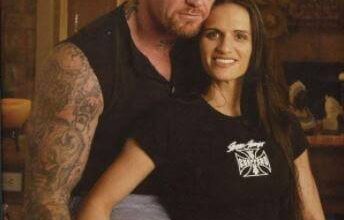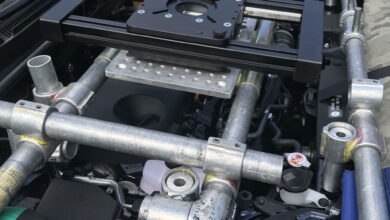Fillet and Chamfer in Injection Molding Design: A Comprehensive Guide

In the world of injection molding, the design of parts plays a crucial role in the quality, functionality, and manufacturability of the final product. Two essential features in this design process are fillets and chamfers. Understanding how to use fillets and chamfers effectively can lead to improved part performance, reduced manufacturing costs, and enhanced aesthetics. This article delves into the significance of fillets and chamfers in injection molding design, their benefits, applications, and best practices.
Understanding Fillets and Chamfers
Fillets
A fillet is a rounded transition between two surfaces, typically found at the internal or external corner of a part. Fillets are used to eliminate sharp edges, which can be stress concentrators and potential points of failure.
Chamfers
A chamfer is a beveled edge that replaces a 90-degree corner with an angled surface. Chamfers are used to ease the assembly process, improve aesthetics, and reduce the risk of damage to both the part and the mold during ejection.
Benefits of Fillets in Injection Molding Design
1. Stress Reduction
- Even Stress Distribution: Fillets help distribute stress more evenly across the part, reducing the likelihood of stress concentration and subsequent cracking or failure.
- Improved Durability: By minimizing sharp corners, fillets enhance the overall durability and longevity of the part.
2. Enhanced Flow of Material
- Smooth Flow: Fillets allow the molten plastic to flow more smoothly into the mold, reducing turbulence and air entrapment.
- Reduced Defects: This smooth flow can minimize common molding defects such as voids, sink marks, and weld lines.
3. Easier Ejection
- Reduced Ejection Force: Parts with fillets require less force to eject from the mold, reducing the risk of damage to both the part and the mold.
- Improved Surface Finish: Fillets can also improve the surface finish of the part by preventing sharp edges from digging into the mold.
Benefits of Chamfers in Injection Molding Design
1. Facilitated Assembly
- Ease of Assembly: Chamfers guide components during assembly, making it easier to align and fit parts together.
- Reduced Assembly Time: This can significantly reduce assembly time and improve overall efficiency.
2. Aesthetic Improvement
- Clean Edges: Chamfers provide a clean, finished look to the part, enhancing its visual appeal.
- Professional Appearance: The beveled edges can give the product a more professional and high-quality appearance.
3. Damage Prevention
- Protection of Parts: Chamfers reduce the risk of damage to the part during handling and assembly by eliminating sharp edges.
- Mold Protection: They also protect the mold from damage during ejection, as the angled edges are less likely to catch on the mold.
Applications of Fillets and Chamfers
Fillets
- Structural Parts: Fillets are commonly used in structural components to enhance strength and durability.
- Consumer Products: In consumer products, fillets improve both the aesthetics and the feel of the product, making it more comfortable to handle.
Chamfers
- Mechanical Components: Chamfers are often used in mechanical components to facilitate assembly and improve fit.
- Aesthetic Products: In products where appearance is critical, chamfers provide a sleek and polished look.
Best Practices for Using Fillets and Chamfers
Design Considerations
- Appropriate Radius for Fillets
- Optimal Radius: The radius of the fillet should be large enough to reduce stress concentration but not so large that it compromises the part’s functionality or aesthetics.
- Standard Guidelines: Follow industry standards and guidelines for the appropriate radius based on the material and part application.
- Angle and Width for Chamfers
- Optimal Angle: The angle of the chamfer should typically be between 30 to 60 degrees, depending on the specific application.
- Chamfer Width: Ensure the chamfer width is sufficient to facilitate assembly without compromising the part’s integrity.
Manufacturing Considerations
- Mold Design
- Smooth Transitions: Ensure smooth transitions in the mold design to accommodate fillets and chamfers without creating stress points or defects.
- Draft Angles: Incorporate appropriate draft angles to facilitate the ejection of parts with fillets and chamfers.
- Material Selection
- Material Properties: Choose materials that can handle the stress distributions facilitated by fillets and chamfers.
- Compatibility: Ensure the material is compatible with the injection molding process and the specific design requirements of the part.

Common Challenges and Solutions
Challenge: Overly Large Fillets or Chamfers
- Impact on Functionality: Fillets or chamfers that are too large can impact the functionality and assembly of the part.
- Solution: Balance the size of fillets and chamfers to ensure they provide the necessary benefits without compromising the part’s design.
Challenge: Inadequate Fillets or Chamfers
- Stress Concentration: Insufficient fillets can lead to stress concentration and potential part failure.
- Solution: Ensure fillets are adequately sized to distribute stress effectively and enhance durability.
Conclusion
Fillets and chamfers are crucial elements in injection molding design that can significantly impact the performance, manufacturability, and aesthetics of the final product. By understanding their benefits and applications, and adhering to best practices, designers can create parts that are both functional and visually appealing. Remember to consider the specific requirements of your part and the capabilities of your manufacturing process when incorporating fillets and chamfers into your design. By doing so, you can achieve a successful and efficient injection molding process, resulting in high-quality parts that meet or exceed expectations.



